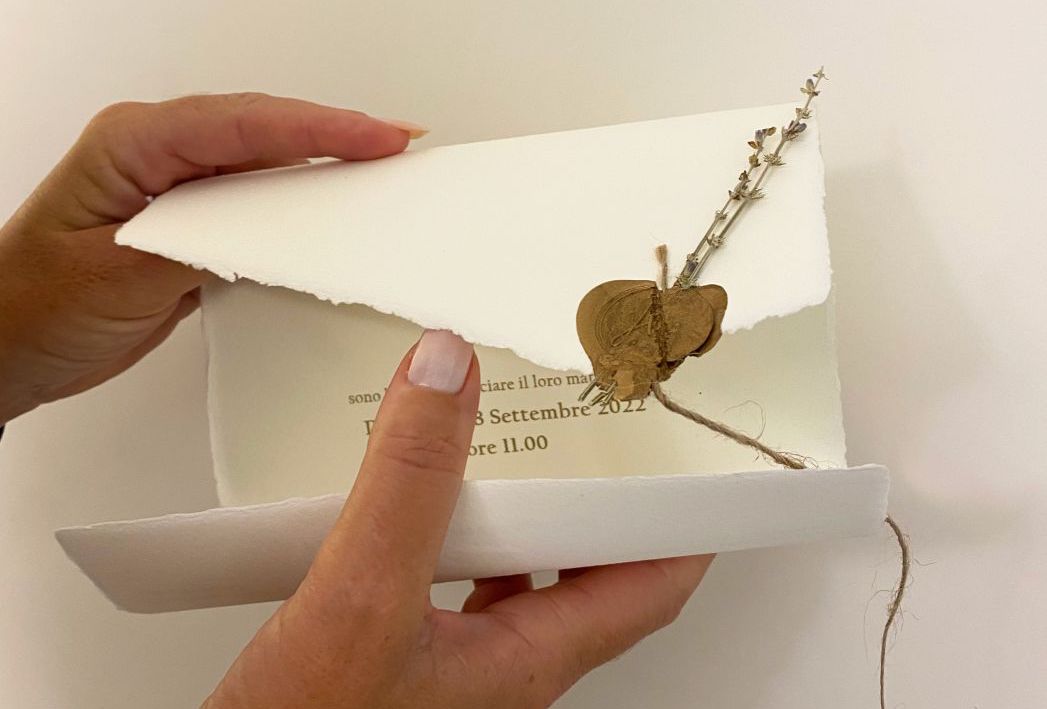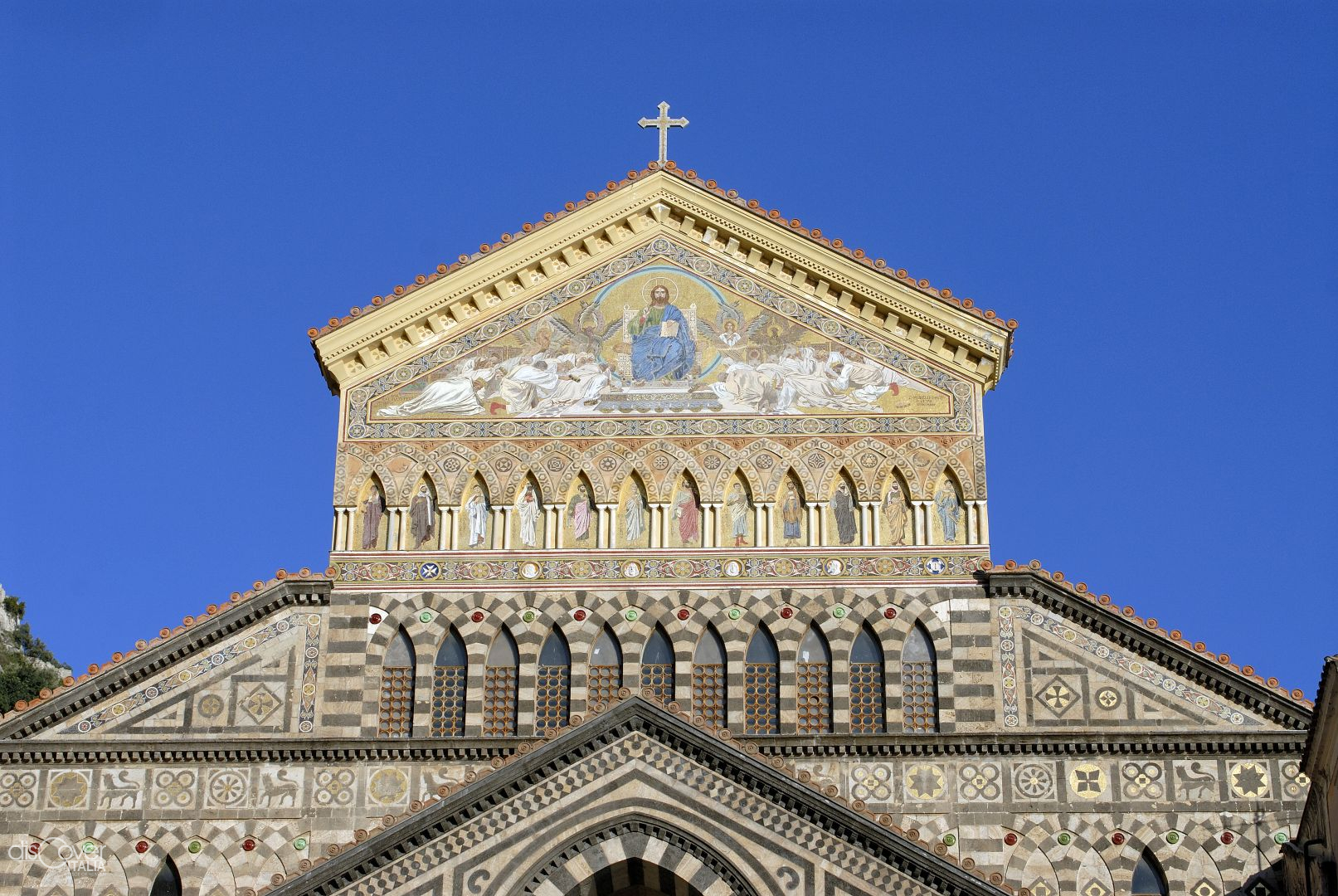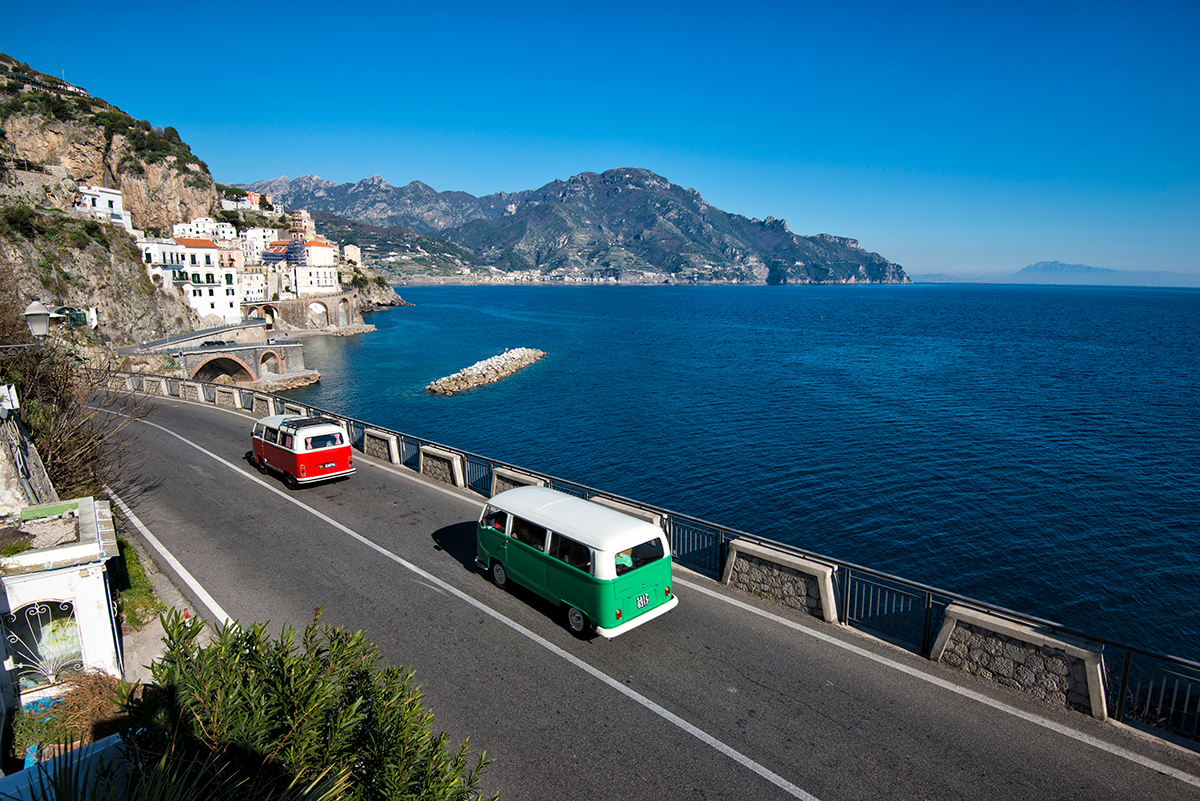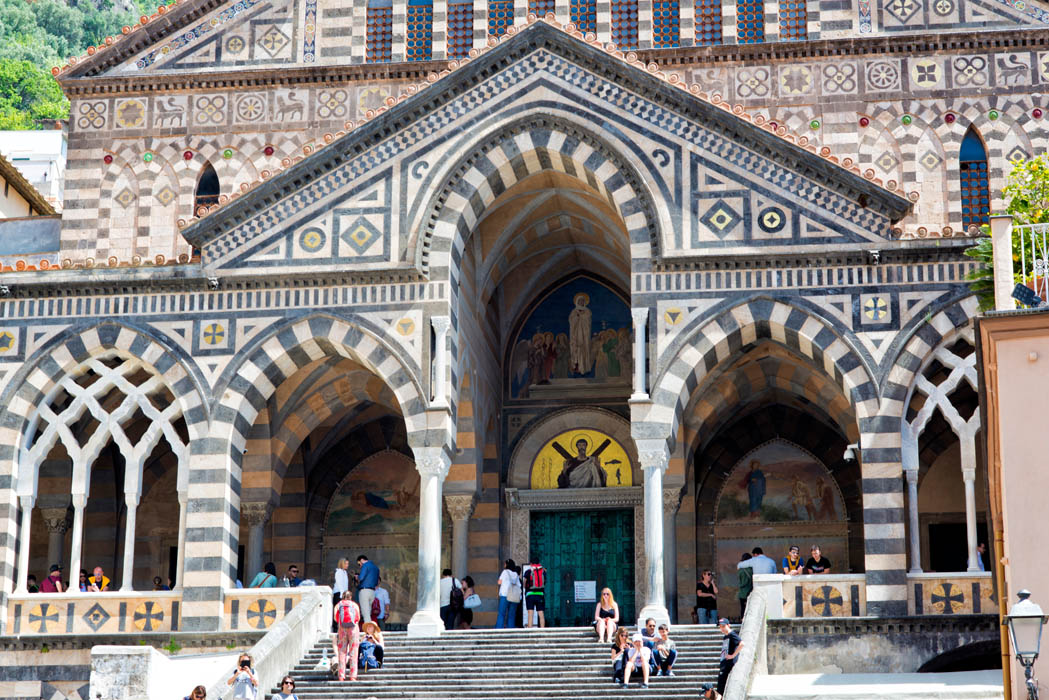The doges of Amalfi spent the summer there.
 In order to enjoy until the last ray of sun kissing the Coast of the hamlet where the darkness comes later than elsewhere, Praiano. The ancient Pelagianum, then Plagianum, which already in its name bears the imprint of the sea it overlooks from Capo Sottile.
In order to enjoy until the last ray of sun kissing the Coast of the hamlet where the darkness comes later than elsewhere, Praiano. The ancient Pelagianum, then Plagianum, which already in its name bears the imprint of the sea it overlooks from Capo Sottile.
Behind, majestic from the height of its 1122 meters, Mount Tre Pizzi stands, which slopes towards the sea with the promontory of which Praiano occupies both sides, looking from each of them to a panorama of rare beauty.
Two farmhouses since the Middle Age, an integral part of the territory of the Amalfi Republic: Praiano, in the upper part, with a strong peasant vocation and Vettica Maggiore, below, a fishing village, many of which practiced coral fishing around the Mediterranean. The steps already connected the different hamlets and all of them with the se. Already then, characteristic ceramic votive shrines were created, present everywhere on the walls of the hamlet, as as sign of devotion, but also to show the right to property.
Today, the centre of the hamlet, Praiano, is identified with the settlement eastward of Capo Sottile which reaches Marina di Praia, the natural landing place of the ancient Plagianum, near Fiord of Furore. In the highest part of the residential area stands the parish church of San Luca, the patron saint, rebuilt once in 1558 in place of the older one, dating back to the 12th century, and then fully remodeled in 1772 with a simple white facade without f any Baroque excess, polychrome altars, a valuable majolica floor. The silver bust of the Patron Saint dates back to that period as well. At the centre of the village there is the church of San Giovanni Battista, in Romanesque style with Baroque additions, presents a single nave, a barrel vault with a magnificent eighteenth-century majolica floor with floral elements and birds, of the Neapolitan school, like the fine contemporary organ. In the lower part, once reached the sea at the bottom of the valley, it continues between the other rocky ridges, the pebble beach of Marina di Praia extends, surrounded by a cliff rich in vegetation with a path leading to the medieval Torre a Mare or Torre Assiola, also called Torre Sciola. Built by Charles I of Anjou in 1278 as a dock for the ships which used it for the “scarricaturo” (port), it has a cylindric plan typical of the Angevin towers; it was then reconverted in the following centuries as a stationing against the Barbarian incursions. It is possible to reach only by boat Grotte di Suppraiano and Grotta dell’Africana, which with its dance floor on the sea is an unmissable stop of the Coast by night.
On the western side of Capo Sottile there is the hamlet of Vettica Maggiore, overlooking Positano and Capri. The main monument is the Renaissance church of San Gennaro Vescovo e Martire (Bishop and Martyr), with a basilica plan with three naves and painted majolica, typical of the Amalfi Coast, protagonist of the floor and roofing of the dome and the belly tower. In the highest part of Vettica, in the Vallata di Campo, near the Dominican convent, there is the church of Santa Maria a Castro, from where you can admire a magnificent panorama on the Peninsula. On the side of Vettica, under the guard of the Torre Grado, in a small cove from which it takes its name, the Gavitella Beach benefits from a rare exposure, full of sun until the spectacular sunset. The private beach is small, but to sunbathe you can use two concrete platforms installed in 1914 for the fishing. By swimming, you can reach a cave in which there is a natural pool, the magnificent Fontana dell’Altare. From Gavitella, by sea, you can go to Le Praia Beach, shortly before Laurito, in the territory of Positano. Of pebble, very quiet, under a suggestive rock wall, also for its exposition, it is rightly one of the most beautiful beaches of the Coast.











Comments powered by CComment